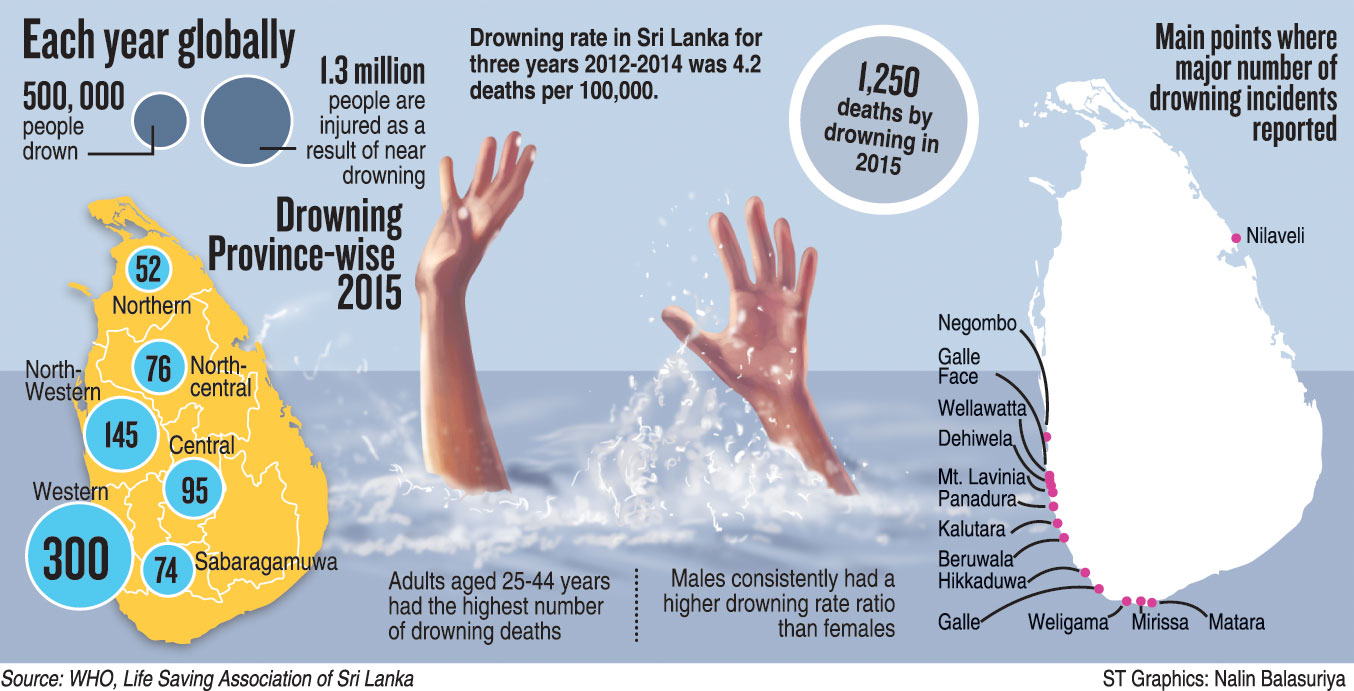News
Death by drowning: SL has more than 3 a day
 Sri Lanka has one of the highest drowning rates in the world, with more than three deaths a day.
Sri Lanka has one of the highest drowning rates in the world, with more than three deaths a day.
It is estimated that 500,000 people drown each year globally, and 1.3 million people sustain injuries as a result of near-drowning experiences.
According to the Life Saving Association of Sri Lanka (LSASL), last year alone, 1,250 people died from drowning.
Swimming or bathing under the influence of liquor has been one of the main causes leading to drowning, while 25%-50% of adolescent and adult deaths are associated with water recreation activities and drowning.
Alcohol use is highest in the age group of 20-34 years. Adults aged 25-44 years had the highest number of drowning deaths followed by those aged 45-64 years.
“Most cases of drowning came from recreational activity, with holidaymakers at the sea, tanks or rivers, who completely ignored basic safety measures,” LSASL Secretary General Asanka Nanayakkara said.
Lakes were reported as the key locations for drowning incidents in Sri Lanka, followed by sea.
A 2014 study by the World Health Organization (WHO), the drowning rate for Sri Lanka over three years 2012-2014 was 4.2 deaths per 100,000. Sri Lanka ranked 12th out of 61 countries, and 10th highest when compared with 35 Low and Middle Income Countries (LMIC).
An average of 74 people drowned in the Sabaragamuwa Province each year.
There are 14 main points where a majority of drowning incidents occurred. They are, Matara, Mirissa, Galle, Hikkaduwa, Beruwala, Kalutara, Panadura, Dehiwela, Mt Lavinia, Wellawatta, Galle Face Green, Negombo and Nilaveli.
Mr. Nanayakkara also explained that, in tackling drowning, there were a lack of ‘learn-to-swim’ programmes, lack of identified safe swimming zones with lifesaving services, difficulty to access safe swimming environments for many, and/or lessons, lack of resources to promote and deliver water safety education and awareness.
“300 people drown in the Western Province (WP) each year, compared with 52 in the Northern Province. Males consistently had a higher drowning rate than females, ranging from 5.5% in WP to 3.5% in Uva Province,” he said.
Most of these deaths are preventable, yet, public awareness and prevention strategies are lacking, said Dr. Harsha Perera of Kalubowila Hospital.
“Cardio Pulmonary Resuscitation (CPR) training. If the person has stopped breathing, immediate first aid by bystanders in the form of mouth-to-mouth respiration (‘kiss of life’) is critically important.”
“Even skilled swimmers can drown, supervision at all levels is important. Parents who take children to swimming pools and other open bodies of water should supervise them very closely,” he said.

